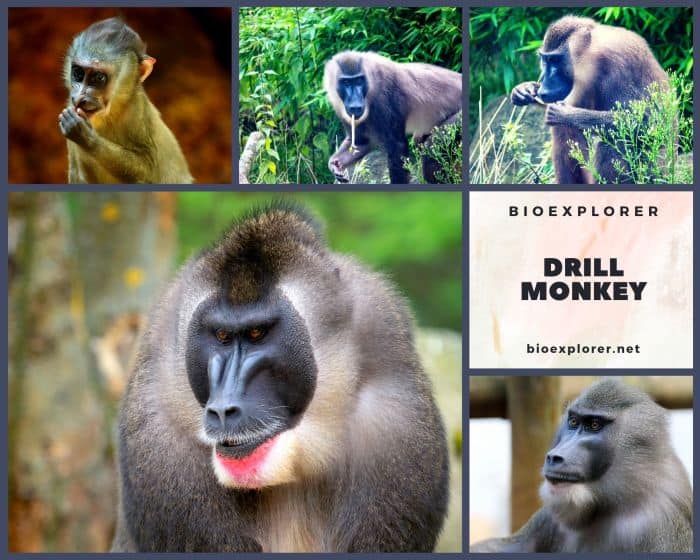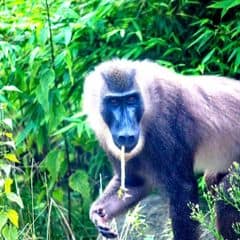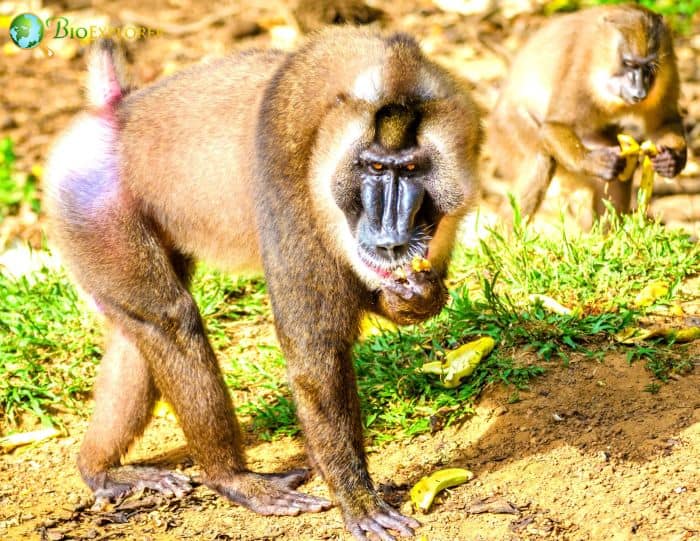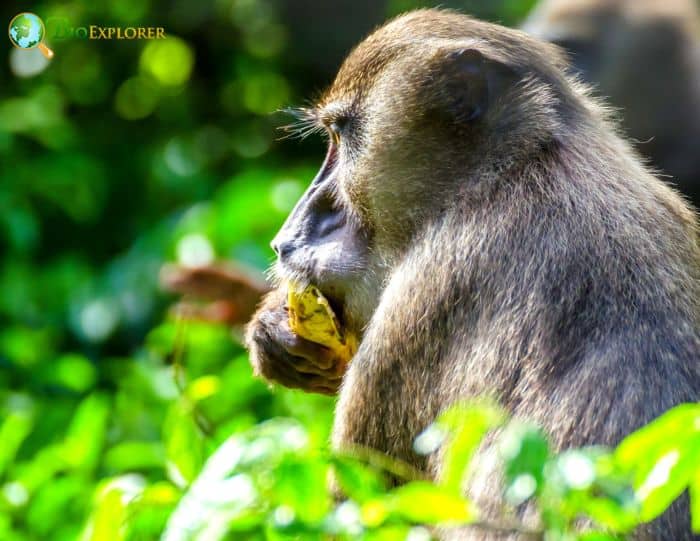
| Animalia | Primates | Cercopithecidae | Mandrillus | Mandrillus leucophaeus |


- Common Name: Drill
- Taxonomy Classification Year: 1807
- Monkey Size: 61 to 76.4 cm (24.02 to 30.08 in)
- Skin Color(s): Dark grey-brown
- Habitat: Rainforest
- Diet: Omnivorous
- Native Countries: Cameroon, Nigeria
Drill Distribution
Drill Characteristics

The Drill[1] is a primate in the Cercopithecidae family (Old-World Monkeys), related to baboons and even more closely to mandrills.
- Rarely seen in captivity and even rarer in the wild, the elusive drill monkey’s face is striking: a chiseled, glossy black face with piercing honey-colored amber eyes, a bright red lower lip, and distinctive bumps along its nose.
- Mainland and Bioko drills have the same olive-brown fur with pale white underparts, although they can be distinguished by the hairs on the sides of their crown.
- A Bioko drill has yellowish-brown fur with a black tip, while the crown of a mainland drill is circled in black and yellow.
- The male Drill, defender of the family, has large canines, sometimes over two inches long, which it uses for protection and competition with other male drills.
- Unlike its cousin – the Mandrill – which is instantly recognizable by its bright red nose with blue ribs, an adult male drill is perhaps most distinguishable by the view of its rear end: its butt develops striking blue, pink, and red hues that they are always present and become more vivid as it gets exciting.
- Besides drills, members of the subfamily Cercopithecinae have a short tail base and deep cheek pouches to store food.
What Do Drills Eat?
Drill Monkey Facts

- Like mandrills, drills are highly social animals that live in groups of around 20 individuals with multiple males and females, with one male dominating reproductive decisions.
- When a female species is ready to mate, her genitals swell, and her buttocks turn dark red if she is pregnant.
- Both females and males have scent glands on their sternum or chest to communicate and mark territory.
- Much of an adult’s day is spent searching the forest floor for fallen food while young weanling drills play and explore the forest under the keen eyes of their siblings and mothers.
- Scientists classify drills as semi-terrestrial digitigrade quadrupeds and diurnal. That said, drills are very active during the day, walking on all fours with flat hands and feet. While they are good climbers, they are more likely to be found on the forest floor doing the hard work of searching for food of their choice.
Suggested Reading: Monkey Classification
Cite This Page
APA7MLA8Chicago
BioExplorer.net. (2025, May 28). Drill. Bio Explorer. https://www.bioexplorer.net/animals/mammals/monkeys/drill/.
BioExplorer.net. "Drill" Bio Explorer, 28 May 2025, https://www.bioexplorer.net/animals/mammals/monkeys/drill/.
BioExplorer.net. "Drill" Bio Explorer, May 28 2025. https://www.bioexplorer.net/animals/mammals/monkeys/drill/.











